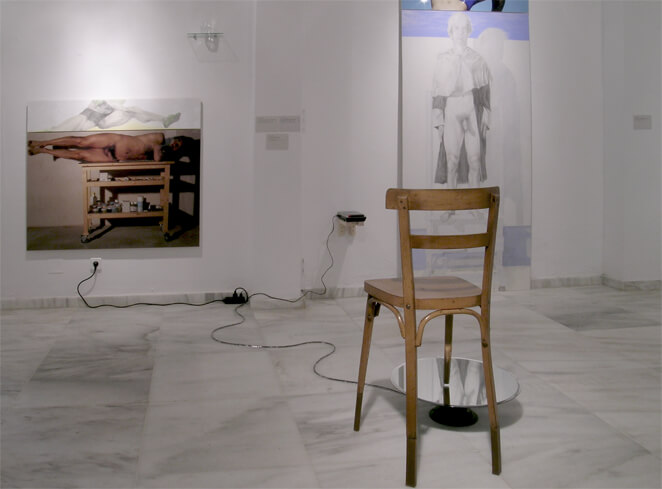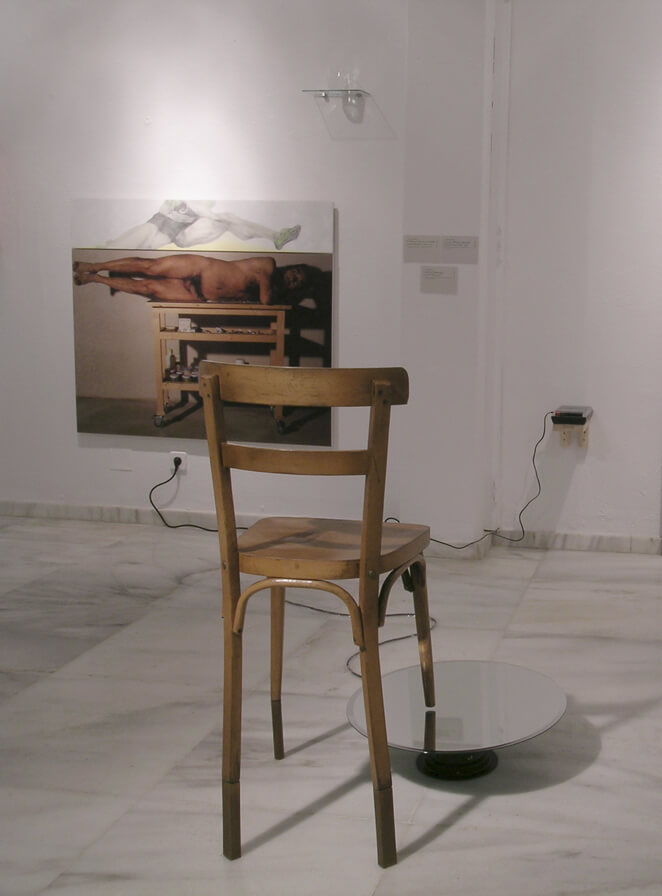Still life (Technologies of the self, 3)
Chair, mirror, motor. Magnetic recorder (magnetic tape recording). Glass, water, glass shelf. Variable dimensions.
Voice: Peter Deacon


«Man is an invention of recent date [...] an effective device with a very long and complex historical process.» (Michel Foucault, 2000: 42)
The series 'Technologies of the self' is made of different pieces around the Foucauldian concept of oneself from Technologies of the self (1982); at all times we should bear in mind that this "I" translates into "self" or "soi"; this "I" is not the subject but the internal interlocutor of that subject: therefore, we’ve decided to keep the series title in its original language. These technologies, in Foucault’s words, are characterised as «those techniques which permit individuals to effect a certain number of operations on their own bodies and souls, thoughts, conduct, and way of being, so as to transform themselves in order to attain a certain state of happiness, purity, wisdom, perfection, or immortality, etc. » (Foucault, 2000: 35).
It is through the ‘self-portrait’ form, of one’s self, where an attempt to find the selfhood of the self is made in a dialectic movement of the self-reflexive, in two ways: auto means "self", but also the notion of identity. Selfhood is the ability of the self to exhibit, to display, its own possibilities: it takes place only on the surface.
Experience is a contemporary origin, a way of retrospection. An experience starts with the appearance of the thing (das Ding) and with the first movement towards it.
Returning to the I means 'be-one-self". However, this return does not place the I closer than what it was: one’s self is the closest proximity. Not only proximity is revealed here as impossible, but also selfhood, as if it were a matter of staying in this one-of-a-kind proximity, holding to it, it would be unbearable. Within this untenable proximity only a movement towards the self, which takes it back to the past, serves as return: the staging of return, at that point where there was no minor distance.
So that retrospection (from lat. retrospicĕre, looking back) is, indeed, active, a gesture that makes the I go back in time, deciphering one’s self. What part of oneself should one renounce? What must one know about oneself in order to be willing to renounce anything?
The permitted and forbidden operations in the game of selfhood, of discovering one’s self in mise à nu, looking at oneself in a similar object, in the mirror: represented feelings, thoughts, any desire that could be experienced, impulses that lead us to search inside oneself for any hidden feeling, any movement of the will, any desire disguised in illusionary forms. This is the only possible selfhood, since solely by moving the I away it can be given a voice.